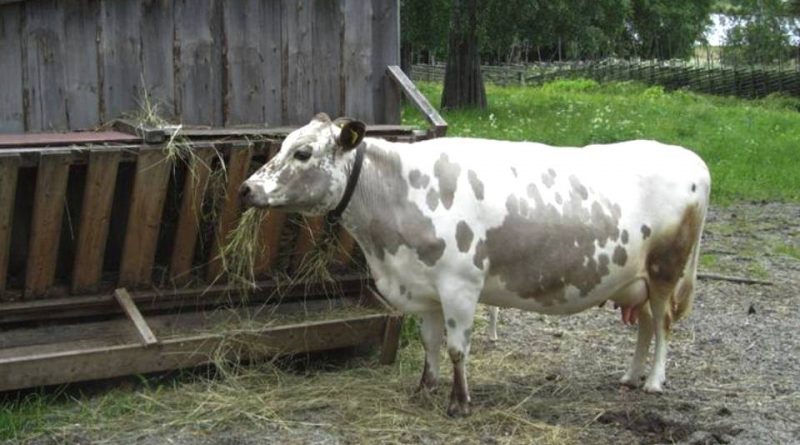Swedish Mountain Cattle
Swedish Mountain Cattle
The Swedish Mountain Cattle is a cattle breed (Bos taurus Linnaeus, 1758) originally from Sweden where today only a few animals remain.
Systematics –
From a systematic point of view, it belongs to the Eukaryota Domain, Animalia Kingdom, Subgenus Eumetazoa, Superphylum Deuterostomia, Phylum Chordata, Subphylum Vertebrata, Infraphylum Gnathostomata, Superclass Tetrapoda, Class Mammalia, Subclass Theria, Infraclasse Eutheria, Superorder, Laurasiatheria, Clade Ungulata, Order Artiodactyla, Suborder Ruminantia, Infraordine Sheep, Family Bovidae, Subfamily Bovinae and then to the Genus Bos, to the Taurus Species and to the Swedish Mountain Cattle Breed.
Geographical and area distribution –
The Swedish Mountain Cattle is a bovine breed bred mainly in the Norrland region, north of the Swedish territory, in a sparsely populated area (where only 12% of the Swedish population lives) and with particularly difficult climatic conditions.
Origins and History –
The first evidence of the presence of this breed in Sweden dates back to over 3000 years ago; archaeologists have found traces of casein (a milk protein) in bowls found in the area.
The Swedish Mountain Cattle today comes from six different populations and has become a separate breed with the establishment of the reproduction register.
The Swedish Mountain Cattle is a restricted Fjäll stock (in Swedish: Fjällko or Svensk Fjällras), always originating in Sweden and characterized by mountain cattle. This original breed was threatened with extinction in the 1970s and 1980s; subsequently it was recovered thanks to an association that was established in 1995, also, in part, thanks to frozen sperm stocks. Furthermore, a genomic analysis has shown that it is closely related to the Bohuskulla breed, which is also in danger of extinction.
The breeders’ association has thus created a genetic bank to preserve the thoroughbred animals of this breed, but this is still exposed to the risk of extinction.
This is mainly due to the competition from industrial breeds that produce a greater quantity, but of lower quality, of meat and milk. Today it is estimated that only a few hundred specimens of this breed remain.
Morphology –
This breed is relatively small in stature: with 250-300 kg for cows, up to 500 kg for bulls and with heights between 115 and 120 cm.
The coat is white with very limited spots. The muzzle is pigmented.
This breed is generally hornless.
The skeleton of the Swedish Mountain Cattle is light and large hooves make them ideal for Swedish forests and mountains where larger breeds cannot wander.
Production aptitude –
The Swedish Mountain Cattle is primarily a dairy breed. The average milk yield is about 5500 kg of milk per lactation; some cows, raised in ideal climatic conditions, can reach 11,000-12,000 kg. The milk has a high butter fat content, about 4.5% and a protein content of about 3.6%; it is particularly rich in κ-casein B and is suitable for cheese production.
It is however a breed with good production of meat even if in smaller quantities than the other breeds. Milk is used to make refined cheeses, butter, butter and cream. The meat is sold in butcher cuts or used for the preparation of cured meats or smoked products.
It is a healthy breed, with a good temperament that knows how to optimally exploit the meager pastures of the regions where it is allocated; they are also animals able to find their food among the birch branches and the Norrland peat bogs and also to defend themselves from the wolf packs and bears of these regions.
Guido Bissanti
Sources
– Wikipedia, the free encyclopedia.- Roberto Parigi Bini, 1983. The cattle races, Pàtron editore, Bologna.- Daniele Bigi, Alessio Zanon, 2010. Atlas of native breeds. Cattle, horses, sheep and goats, pigs bred in Italy, Edagricole-New Business Media, Bologna.

